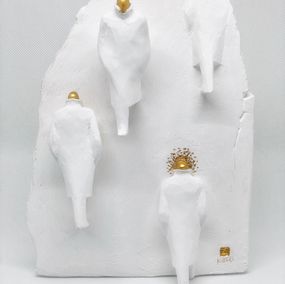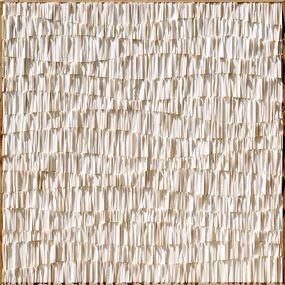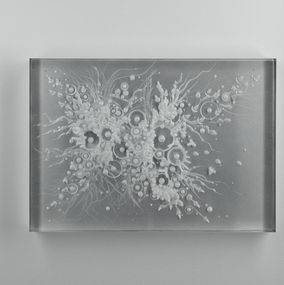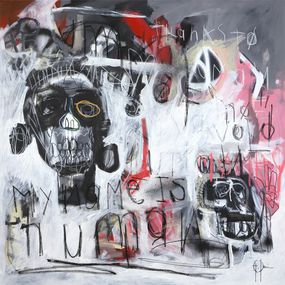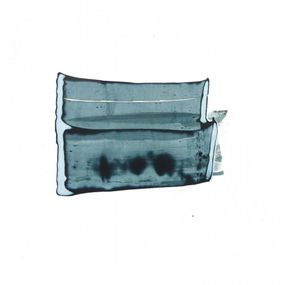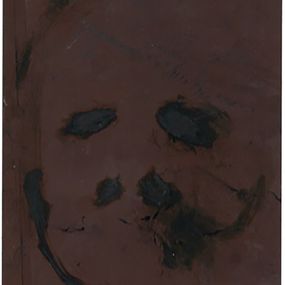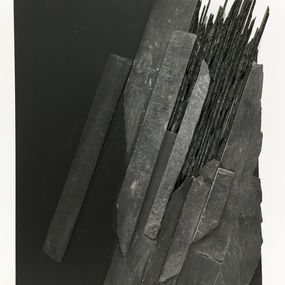
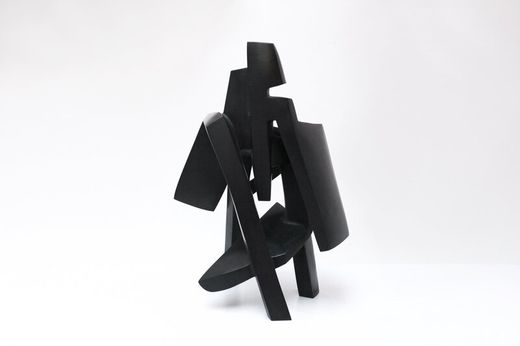
Biography
Of Franco-Iranian origin, Parvine Curie was born in Nancy in 1936. After obtaining her baccalaureate, she undertook linguistic studies and left to discover England, Austria, Spain and Italy. In 1957, she discovered Catalan art and decided to settle in Barcelona where her first sculptures were created. She lives with the Catalan sculptor Marcel Marti with whom she has a son, David Marti in 1959. In 1960, she presents her first solo exhibition at the French Institute in Barcelona. In 1965, his work became more stylized and constructed, in particular thanks to the practice of iron, bronze, cut aluminum and the following year repoussé metal. The fashion store "Gales" in Barcelona commissioned him to decorate its windows for Christmas: Fantastic birds, Angels-Mermaids.
In May 1968, she made her first Mothers, which she presented to Suzanne de Cönninck at the Center d'Intégration des Arts. She left Spain in 1969 to settle in Paris. In 1970, Parvine Curie occupied a studio at the Cité internationale des arts in Paris. She presents at the Young Sculpture Fair in the Luxembourg Gardens Première Mère, an assembly of glued boards, painted black and enhanced with brass. This work is noticed by the sculptor François Stahly who recognizes in it a great affinity with his work of the time. Stahly and his wife Claude invite him to work with them at the collective workshop in Crestet, in Vaucluse and then in Meudon. It is there that Parvine Curie learns the basics of the trade, the size of wood and stone. Stahly, for his part, recognizes the structuring influence of Parvine on his work.
In 1973, after the death of Claude Stahly, Parvine Curie settled for six months with François Stahly in Albany in the United States. The landscapes of the Rocky Mountains and the discovery of pre-Columbian civilizations then strongly influenced his work. She travels to Mexico, Guatemala, Morocco, India, Egypt, Yugoslavia and Greece.
After her divorce from Marcel Marti, she married Stahly and back in France, she received her first public commissions (1st placed at the Pierre-Bégon college in Blois. There followed a work, Mère Anatolica, placed in the courtyard of the middle-school Pierre-de-Coubertin, in Chevreuse where Pierre Huyghe will study in 1975. This hieratic sculpture will be partly at the origin of the career of the sculptor). In 1976 the Monnaie de Paris publishes small reliefs, sculptures and later its jewels, in limited numbered editions.
In 1979, she received the Bourdelle prize (Jury made up of sculptors Penalba, Waldberg, Hajdu, Etienne-Martin and Couturier) and, in 1980, a two-meter version of the work Mère-Cathédrale, in exotic wood, was purchased by the city of Paris for the inauguration of the Museum of Contemporary Outdoor Sculpture, quai Saint-Bernard.
In 1984, she presented a retrospective at the Museum of Modern Art in Troyes and the city of Meudon commissioned her to create a Monument to the Victims of Nazi Barbarism, made of Carrara marble. In 1988 the Élysée bought the aluminum sculpture Mère-Couloirs from him, a presidential gift to German Chancellor Helmut Kohl, and two years later a non-commercial edition of twenty-five small pyramids, which President Mitterand would offer to heads of state during the summit. Franco-African in La Baule. She presented a retrospective of her works at the Fondation Jean Arp (Clamart, Hauts-de-Seine), at the Center Jacques-Prévert, (Aulnay-sous-Bois, Seine-Saint-Denis) in 1994, at the Orangerie du château de Meudon (Hauts-de-Seine) the following year and at the Gothic monastery of Pebralbes and the Maeght gallery in Barcelona in 1999.
In 2000 she exhibited her works alongside that of François Stahly at the French Institute in Barcelona (Spain). In 2003 she exhibited at the Meudon Art and Culture Center and devoted her time to François Stahly whose health deteriorated and died in 2006. The following year it was his son, David Marti, painter and poet who turned off in turn. She organized a Retrospective presented to him at the Cadaqués museum in 2009. In 2012, she presented a new retrospective at the Collegiate Church of St Martin in Angers with musical interventions as well as poetic itineraries on texts and poems by David Marti. The following year 2013 she was named Chevalier des Arts et des Lettres (raised to the rank of Officer in 2021) and participated in the exhibition "Les Femmes Sculpteurs" at Villa Datris (Isle-sur-Sorgue).
In 2015 she participated in the exhibition "Draw me a collection" at the Museum of Modern Art in Troyes and created the Parvine Curie - David Marti Endowment Fund.
In 2017 she published a monograph on the occasion of her retrospective "Parvine Curie, Sculptures & Tangkas presented at the CAMPREDON ART Center in L'Isle-sur-Sorgue (E. Maison de l'Europe) and the following year she participates in the exhibition Les Pionnières - Dans les ateliers de femmes artistes du XXe siècle at the Galerie Pierre-Alain Challier and publishes a Monograph at Somogy Editions d'Art with the Galerie Martel Greiner. In 2021 she is also in the spotlight at the Center Georges Pompidou (Paris) in the exhibition Elles font l'abstraction.
Nationality
Categories
Artistic movements
Themes

Parvine Curie
Sculpture - 14 x 14 x 11 cm Sculpture - 5.5 x 5.5 x 4.3 inch
$727

Parvine Curie
Sculpture - 14 x 14 x 11 cm Sculpture - 5.5 x 5.5 x 4.3 inch
$727

Parvine Curie
Sculpture - 30 x 9 x 8 cm Sculpture - 11.8 x 3.5 x 3.1 inch
$1,454

Parvine Curie
Sculpture - 30 x 9 x 8 cm Sculpture - 11.8 x 3.5 x 3.1 inch
$1,454









